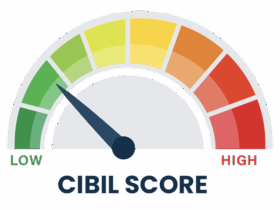As large-scale corporations, enterprises, and startups are hugely adopting the solutions of blockchain in their businesses, they understand that no protocol of blockchain is capable of attaining its ultimate efficiency in an entire exclusivity. Interoperability powers the competence of operating systems. Again, a blockchain ecosystem too requires interoperability. This is the capability to transfer info and also exchange data between different blockchains seamlessly. The cross-chain process is related to strengthening the communication of blockchain via the deployment and development of an interoperable blockchain system.
What is meant by a cross-chain?
A cross-chain is considered the interoperability between a couple of independent blockchains. Taking into consideration the fact that blockchains have the same fundamental infrastructure, this technology has turned into a crucial thing that ensures that blockchains are capable of communicating with one another. Cross chain support is considered the utmost solution towards improving interoperability between different blockchains. It supports the broadcasting of value and information between various blockchain networks.
Every day, distributed ledger networks and blockchain do explore incessantly and so, it becomes important to interconnect novice chains. It is vital as people discover various applications that contribute to the newest technology. Most networks of blockchain do operate in an isolated ecosystem for addressing some exclusive set of requirements. At first, blockchains were viewed as an exclusive solution for every contract, transaction, etc. on only one chain. Nonetheless, the challenges that are linked with scalability and innovation disclosed that the technology was not practical in the manner it was envisioned earlier.
Blockchains do operate in isolation and so, they have limited the enjoyment of the technology of ledger severely. In this respect, the ideal example is it isn’t possible to share info between Ethereum and Bitcoin, and they are considered highly prevalent blockchains. A user fails to enjoy the entire benefits of a ledger technology because of the handicap that is involved in creating communications that happen between various technologies of blockchain.
The working process of a cross-chain technology
There isn’t a single approach that explains how does cross-chain technology gets utilized. Various networks might take various approaches to the interoperability of blockchain for facilitating transactions all across several chains without including centralized solutions or third parties. Some approaches that cross-chain communication uses are:
- Stateless SPVs – This allows enough progressive smart contract for verifying a division of Proof of Work. You can adapt stateless SPVs into various use cases because they are comparatively inexpensive.
- Merged consensus – The method of merged consensus utilizes relay chains for allowing 2-way interoperability that happens between chains. For enforcing merged consensus you need to develop it into a chain from group up.
- Relays – A relay permits smart contracts on a specific chain for verifying the events that take place in various other chains. Relays are capable of verifying the whole history of chains and particular headers on-demand.
- Atomic swaps – They aren’t considered the real form of cross chain support as a couple of chains do not communicate with one another. However, the method permits users to organize transactions all across chains.









Leave a Reply